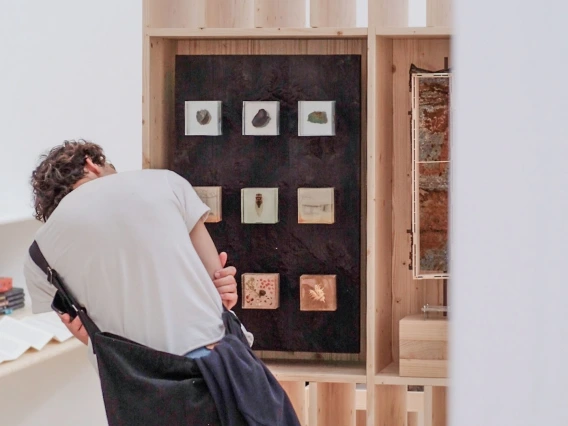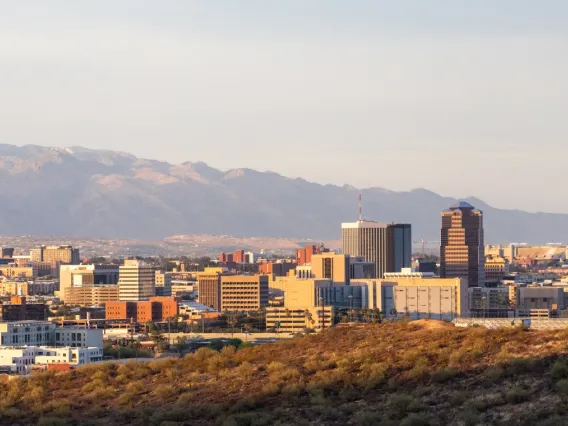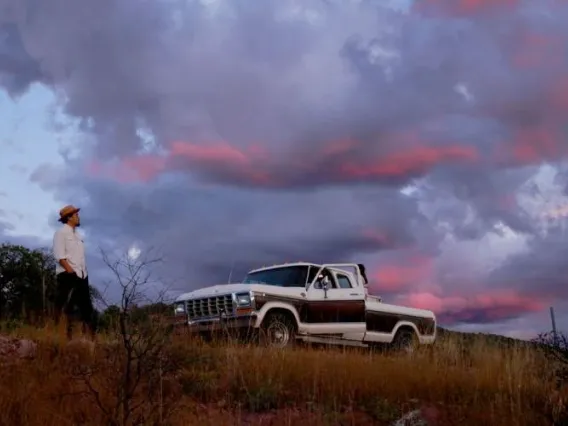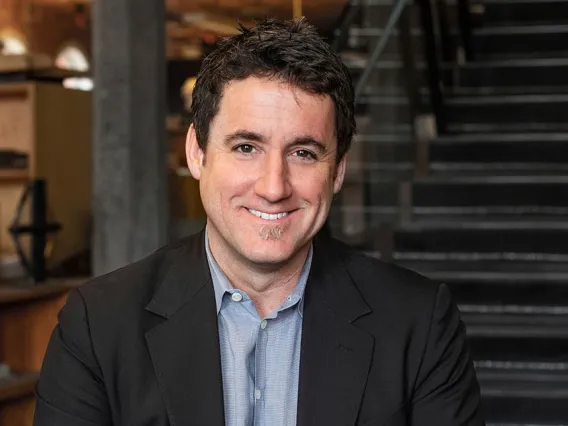
Jesus Robles Showcases Tucson-Inspired Work at the Venice Biennale
Jesus Robles, an Assistant Professor of Practice and co-founder of the architecture studio DUST, was selected to showcase Tucson-inspired work at the 2025 Venice Architecture Biennale, one of the world’s leading platforms for design innovation. His installation, created for the U.S. Pavilion’s exhibition “Porch: An Architecture of Generosity,” highlights the ecological richness of southern Arizona and reimagines a small wildlife pavilion as a metaphor for broader regional challenges related to conservation, culture, and water resilience. Robles’ contribution not only elevates the work of the Tucson Audubon Society on an international stage but also reflects the design values he brings to CAPLA: a commitment to place-based thinking and the belief that even small-scale architecture can illuminate larger environmental issues.

Lecture Recap | Essence: A Lecture by coLAB Studio
Speakers from coLAB studio discussed the intrinsic nature and indispensable quality that determines an individual's character as a designer.

The Transformative Career of a Lifelong Explorer: R. Brooks Jeffery ’83 B.Arch, Professor Emeritus of Architecture
Though Emeritus Professor of Architecture R. Brooks Jeffery retired from UArizona in June 2022 as associate vice president for research, at CAPLA he will be long acclaimed for his dedicated work across many roles, including associate dean and Drachman Institute director—as well for his wide-reaching service and award-winning research on heritage conservation in arid environments.

Ghana’s Informal Residents Show How Social Innovation Can Solve Urban Challenges
A recent paper by Seth Asare Okyere, CAPLA visiting assistant professor of urban planning, and Stephen Kofie Diko, assistant professor at the University of Memphis, argues that the solutions residents in poor, marginalized, informal and crowded urban areas come up with to make everyday urban life livable are a form of social innovation.

Award-Winning Heritage Conservation Efforts by CAPLA Faculty and Students Lead to $4.6M in State Restoration Funding for Buffalo Soldier Camp
CAPLA Heritage Conservation Program Project Director Helen Erickson and graduate students Sarah McDowell and Teresa DeKoker have been instrumental in efforts to preserve Camp Naco, a borderlands Buffalo Soldier camp located near Bisbee, Arizona, resulting in awards for their story map and new funding to preserve the site.

Crossing City Limits (and International Time Zones): CAPLA's Eduardo Guerrero on His Popular Urban Podcast
Though the pandemic was a challenge for many, for CAPLA Senior Lecturer in Architecture and Urban Design Eduardo Guerrero it presented a new opportunity—connecting ideas from urbanism experts around the world through conversations, resulting in his urban podcast, Crossing City Limits. Learn more in this fascinating interview.

UArizona Researchers Awarded $3.5M to Fight Extreme Heat
A UArizona team led by CAPLA Assistant Professor Ladd Keith is collaborating with researchers from Arizona State University and Northern Arizona University on a $25 million project, funded by the U.S. Department of Energy, to study the impact of climate change on Arizona's urban areas.

Architecture Senior Lecturer Shares His Innovative, 'Prideful' Favorite Place for Arizona Daily Star
Damon Leverett, an architecture senior lecturer at CAPLA, takes readers along for a tour of the Health Sciences Innovation Building as part of the Arizona Daily Star's “Favorite Places” series, concluding that the HSIB exemplifies the types of public and educational buildings that should be "prideful places for our community and society."

Architecture Professor of Practice Takes Arizona Daily Star Readers on a Southern Arizona Road Trip
Jesús Edmundo Robles Jr, an architecture assistant professor of practice at CAPLA, takes readers along for a ride in his trusty pickup truck as part of the Arizona Daily Star's “Favorite Places” series, narrating the spare beauty of the 80-mile drive between the Santa Rita and Whetstone Mountains, though Sonoita, and into the Patagonia Mountains.

Imagination is the Most Powerful Tool: Kevin Kudo-King '95 B.Arch
Kevin Kudo-King, a 1995 graduate of the B.Arch program, is the principal/owner of internationally renowned design firm Olson Kundig in Seattle. In this profile, he discusses his path through and beyond architecture school, offers insight for current design students, shares the collaborative process used by his design firm as well as a recent favorite project and shares how his inspirations and passions shape his design outlook.

Lecture Recap and Video: June Williamson on 'A Retrofitting Suburbia Agenda for Equity, Health and Resilience to Climate Change'
June Williamson lectures on the urgent challenges produced by northern American suburban form and showcases urban design strategies to mitigate and address these challenges.
